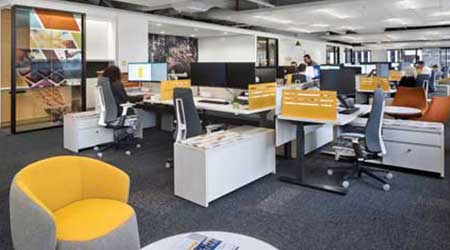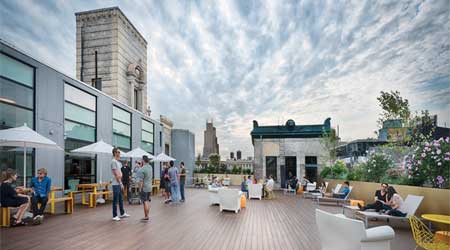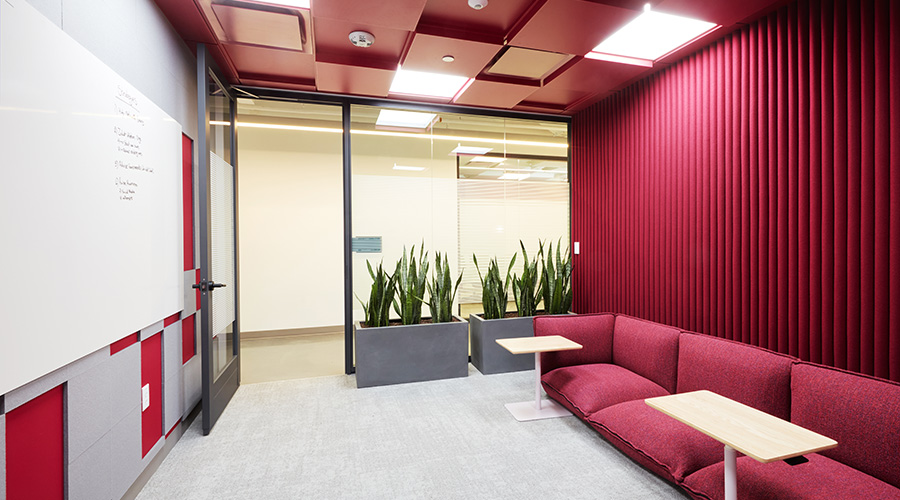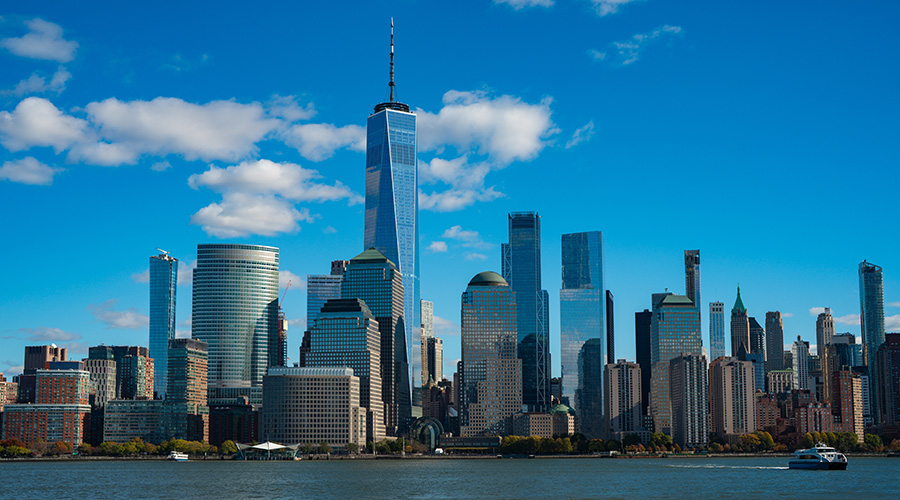 The workplace solution of the future will be a smarter, data-driven evolution of the much-maligned open plan model, not the one-size-fits-all approach that has led to decades of failed configurations.David Wakely
The workplace solution of the future will be a smarter, data-driven evolution of the much-maligned open plan model, not the one-size-fits-all approach that has led to decades of failed configurations.David WakelyHappiness Matters: How the Post-Pandemic Workplace Should Support Occupants
Rethinking the open office plan and connecting occupants with nature will be crucial elements of future workplace design.
The stress brought on by the uncertainties of the pandemic is making people question their priorities in life; the physical and mental wellbeing of employees will become an even greater factor for companies and their workplace practices. What’s more we have learned firsthand the value of nature as humans during COVID-19 sheltering. Nature, as a respite to our home office, provides a break in our ties to technology, keeping us productive: a practice that was previously a hard sell for management.
The rise in the importance of employee happiness — the catalyst for innovation and creativity — will heighten the focus on the user experience. It’s the development of this user experience that will continue to drive people to the office and solidify the company culture, creating a more human-focused workplace that people feel good about working in and belonging to. The solution will be a smarter, data-driven evolution of the much-maligned open plan model. It is certainly not the one-size-fits-all approach that has produced decades of failed models of configurations.
Going forward, employees should be tasked with taking an active role in the creation of their environments, contributing to the processes and needs as the design progresses. Different people and groups have varying needs and preferences. The key is creating workspaces that encourage certain behaviors and support tasks that are tied to business goals, innovation, work processes, and company culture. This includes providing the physical setting for a variety of tasks as well as an alternative vibe to cater to personal preferences of surroundings. Environmental graphics, varied furnishings, and appointments such as those we experience in our homes can be used to portray a familiar and comforting environment for all types of tasks. Facilities will provide for focused, individual work; collaborative activities; large meetings; presentations; social interaction; and break areas for lunch, or simply a change in scenery where people are given a choice of which environment suits their task and energy requirement.
Our connection to nature, both visually and physically, should become a standard feature in all workplaces through the integration of biophilic design. The exposure and glimpses of natural elements in a work environment will be increasingly important for employee health. Daylighting will continue to be a must-have element based on the multiple research studies proving its benefits to an individual’s overall health, cognitive functioning, alertness, and sleep quality. Studies have shown that workers with adjacency to windows and natural light during the day get 46 more minutes of sleep per night. In fact, sleep is now recognized as a pivotal element of physical and mental health in addition to productivity. Plants and the introduction of more live green elements and natural materials like wood will continue to be a positive addition to the workplace as research demonstrates that people’s “happy place” vision is deeply connected to nature, and the health benefits outweigh the maintenance concerns for these features.

Access to outdoor spaces, roof terraces, and green roofs is an extension of the formal workplace, especially for city workers who cherish exposure to green spaces. The selection of healthy and responsibly sourced materials will become mainstream as manufacturers move to comply with rigorous sustainable standards, and employees expect good planet stewardship from their companies.
Further health benefits can be provided to occupants through intelligent building operating systems that will monitor and adjust the air quality at a much more granular level. The impact of climate change promises more stringent building codes to reduce the energy consumption and carbon impact of buildings.
Related Topics:















